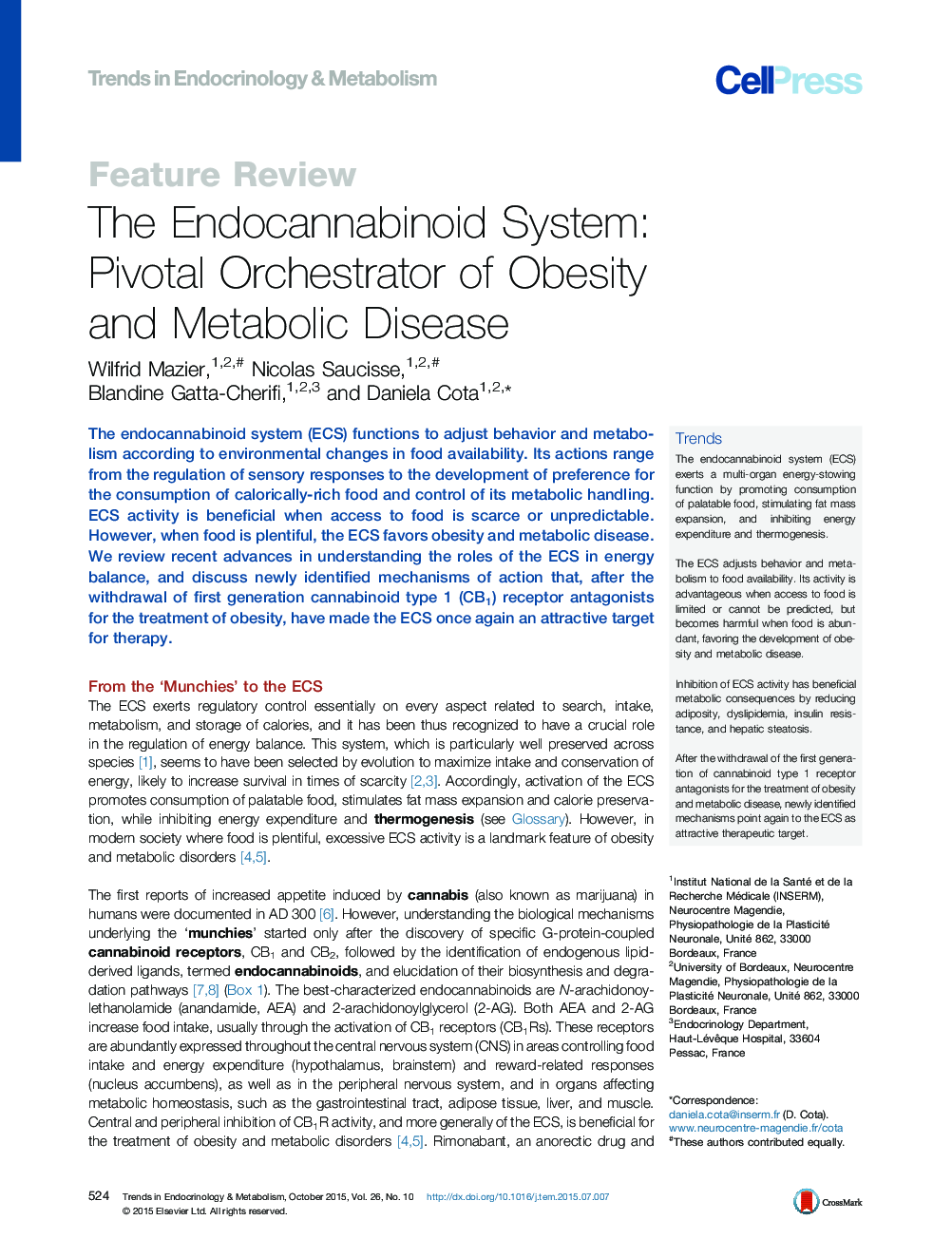| کد مقاله | کد نشریه | سال انتشار | مقاله انگلیسی | نسخه تمام متن |
|---|---|---|---|---|
| 2810162 | 1158411 | 2015 | 14 صفحه PDF | دانلود رایگان |
The endocannabinoid system (ECS) functions to adjust behavior and metabolism according to environmental changes in food availability. Its actions range from the regulation of sensory responses to the development of preference for the consumption of calorically-rich food and control of its metabolic handling. ECS activity is beneficial when access to food is scarce or unpredictable. However, when food is plentiful, the ECS favors obesity and metabolic disease. We review recent advances in understanding the roles of the ECS in energy balance, and discuss newly identified mechanisms of action that, after the withdrawal of first generation cannabinoid type 1 (CB1) receptor antagonists for the treatment of obesity, have made the ECS once again an attractive target for therapy.
TrendsThe endocannabinoid system (ECS) exerts a multi-organ energy-stowing function by promoting consumption of palatable food, stimulating fat mass expansion, and inhibiting energy expenditure and thermogenesis.The ECS adjusts behavior and metabolism to food availability. Its activity is advantageous when access to food is limited or cannot be predicted, but becomes harmful when food is abundant, favoring the development of obesity and metabolic disease.Inhibition of ECS activity has beneficial metabolic consequences by reducing adiposity, dyslipidemia, insulin resistance, and hepatic steatosis.After the withdrawal of the first generation of cannabinoid type 1 receptor antagonists for the treatment of obesity and metabolic disease, newly identified mechanisms point again to the ECS as attractive therapeutic target.
Journal: - Volume 26, Issue 10, October 2015, Pages 524–537
